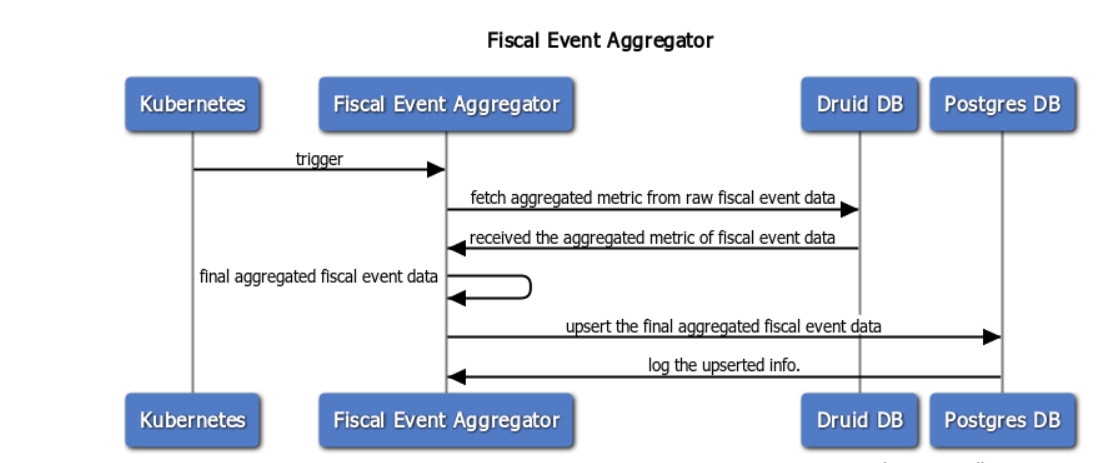iFIX Fiscal Event Aggregator
Overview
Fiscal Event Aggregator is a Java standalone application that runs as a Cron Job to aggregate fiscal event data from the Druid data store to Postgres DB.
Version History
Current Version: 2.0.0
Pre-requisites
Before you proceed with the configuration, make sure the following pre-requisites are met
Java 8
Druid DB & Postgres DB should be up and running
Features
Fiscal-Event-Aggregator computes the aggregate of data over a selected time period. Aggregator will apply the time range filter according to the following approach :
Follow the steps below to aggregate the final fiscal event data as per the fiscal time periods.
Group the sum of the amount based on department entity ancestry[6] id (
attributes.departmentEntity.ancestry[6].id) that is GP (Gram Panchayat), COA (chart of account) id, and event type.Difference of the sum of the amount of "DEMAND" and "RECEIPT" event type with respect to distinct department entity ancestry[6] id (
attributes.departmentEntity.ancestry[6].id) that is GP (Gram Panchayat).Difference of the sum of the amount of "BILL" and "PAYMENT" event type with respect to distinct department entity ancestry[6] id (
attributes.departmentEntity.ancestry[6].id) that is GP(Gram Panchayat).
Upsert the final aggregated fiscal event data into the Postgres DB.
Environment
Note: Below environment variables need to be configured with respect to the environment
DRUID_CONNECT_PROTOCOL
HTTP
This is a hardcoded value And won’t change w.r.t environment. And It depends upon the druid broker’s protocol that is getting used to connect.
DRUID_CONNECT_PORT
8082
This is a hardcoded value And won’t change w.r.t environment. It depends upon the druid broker protocol that we are using and the corresponding port of that druid broker.
DRUID_HOST
druid-broker.olap
this is kept under configmaps.
FISCAL_EVENT_DATASOURCE
fiscal-event
This is the data Source present in Druid DB. It is the same as defined in Druid DB.
Interaction Diagram

Configuration
Update the configurations in the dev.yaml, qa.yml, prod.yaml file.
Last updated
Was this helpful?